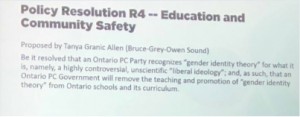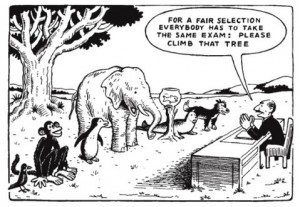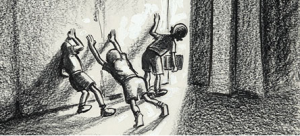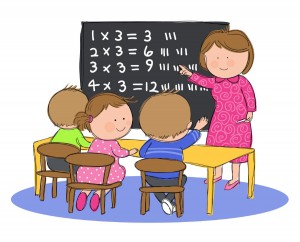/https://www.thestar.com/content/dam/thestar/news/insight/2011/04/08/the_ultimate_public_school_advantage_democracy/public_educationcolor.jpeg)
As a citizen of Canada, I am a strong and proud advocate of access to public education. According to John Dewey, public education reinforced a democratic community that can break down barriers “of class, race, and national territory which kept men from perceiving the full import [importance] of their activity” in democracy (Dewey, 1916).
The purpose of establishing charter schools in Canada was to increase the need for flexibility to meet students’ needs as public schools were “seen as bound by excessive regulations stemming from provincial laws, school district policies and union contracts” (Brown, & Lawton, 2013). Charter school advocates often cite the need for schools to be responsive to “the demands of parents and are places where innovative educational practices are difficult to achieve” (Brown & Lawton, 2013). “Proponents say that uniformity of public schools is a detriment to the quality of students’ education and that more choices of programs and competition among schools are needed so that ineffective schools are closed” (Brown & Lawton, 2013).
Charter schools differ in the rules that govern them. Some charter schools can pick and choose students while other schools offer lotteries. Some charter schools are essentially private schools while others received some public funding charging tuition fees for attendance.
Initially, charter schools promised better levels of education, greater efficiency in spending public dollars, and high test scores. Charter schools have been functioning long enough to assess the credibility of these promises through research studies.
Bettinger (2005) compared standardized testing in both charter and neighbouring public schools and found that “test scores of charter school students did not improve, and may actually decline, relative to those of public school students.”
Bifulo and Ladd (2006 ) found that students made “considerably smaller achievement gains in charter schools than they would have in public schools”. Further, the authors found negative impacts on student learning due to high levels of student turnover.
After the desegregation of schools in the United States, “new policies were enacted allowing school choice, charter schools, and neighbourhood attendance zoning” (Archbald, Hurwitz, & Hurwitz, 2018). The authors engaged in a 26 year longitudinal study on the impacts of school choice and charter schools showing “greater segregation by race and income among schools accelerated after the policy changes” (Archbald, Hurwitz, & Hurwitz, 2018).
Mindzak (2015) cited that after 20 years, charter schools “have held a precarious existence” as “only a handful of charter schools remain in Canada.” Mindzak cited the importance of “some of the historical, cultural, regional, and political dimensions of education in Canada” and further stated that the “rejection of charter schools should represent a continued commitment to public education and the principles of equity and social justice” (2015).
Charter schools are sometimes seen as places for the best and brightest students to learn so they can achieve the highest level of educational success. Bouridieu and Aarseth (2015) showed that school choice reinforces elitism in order to reproduce structure of status and privilege.
In the end, charter schools did not fulfil the promises of their success. Students did not receive better education and the public did not receive a greater efficiency in the spending of public funds. Note that in some cases, funds were diverted from the funding of public schools for the partial funding of these semi-private schools.
Instead of greater academic success, students were segregated based on race and income (Archbald, Hurwitz, & Hurwitz, 2018). Charter School students did not achieve higher test scores than their public school counterparts (Bifulo & Ladd, 2006). In Canada today, only a few charter schools remain (Mindzak, 2015) and thus many “ineffective” charter schools were closed.
By creating barriers to learning through the segregation of students without privilege, charter schools go against The Canadian Charter of Rights and Freedoms (the Charter)“that guarantees equal rights and treatment based on a number of grounds, including race, national or ethnic origin, colour, religion, sex, age, or mental or physical disability”.
The Ministry of Education (2008) goes on to state that in public education “Equity and excellence go hand in hand. … In a truly equitable system, factors such as race, gender, and socioeconomic status do not prevent students from achieving ambitious outcomes. Our experience shows that barriers can be removed when all education partners create the conditions needed for success (p. 8).”
Canada is unique in its commitment to public education and the principles of equity and social justice. Canada’s public education system is effective as it allows all students, regardless of their privilege, to achieve their best. Our public education system reinforces our democracy.
As teachers, we need to keep fighting for an education system that John Dewey would embrace and be proud of.
Fight for our public education … it’s worth it!
Collaboratively Yours,
Dr. Deb Weston, PhD
References
Archbald, D., Hurwitz, A., & Hurwitz, F. (2018). Charter schools, parent choice, and segregation: A longitudinal study of the growth of charters and changing enrolment patterns in five school districts over 26 years. Education Policy Analysis Archives, 26, 22.
Bettinger, E. P. (2005). The effect of charter schools on charter students and public schools. Economics of Education Review, 24(2), 133-147.
Bifulco, R., & Ladd, H. F. (2006). The impacts of charter schools on student achievement: Evidence from North Carolina. Education Finance and Policy, 1(1), 50-90.
Bouridieu P & Aarseth, H. In Maudlin, J. G., & Gaztambide-Fernández, R. (2015). ‘Private schools in the public system’: school choice and the production of elite status in the USA and Canada. In Elite Education (pp. 73-86). Routledge.
Brown, D,, & Lawton, S., Charter Schools (2013). In The Canadian Encyclopedia. Retrieved from https://www.thecanadianencyclopedia.ca/en/article/charter-schools
Dewey, J. (2004). Democracy and education. Courier Corporation.
Government of Canada. (1982). The Canadian Charter of Rights and Freedoms (the Charter), Constitution Act, 1982, Part I.
Mindzak, M. (2015). What Happened to Charter Schools in Canada?. Equity & Excellence in Education, 48(1), 105-117.
Ministry of Education. (2018). Reach Every Student: Energizing Ontario Education, Toronto: Ministry of Education, Ontario.








